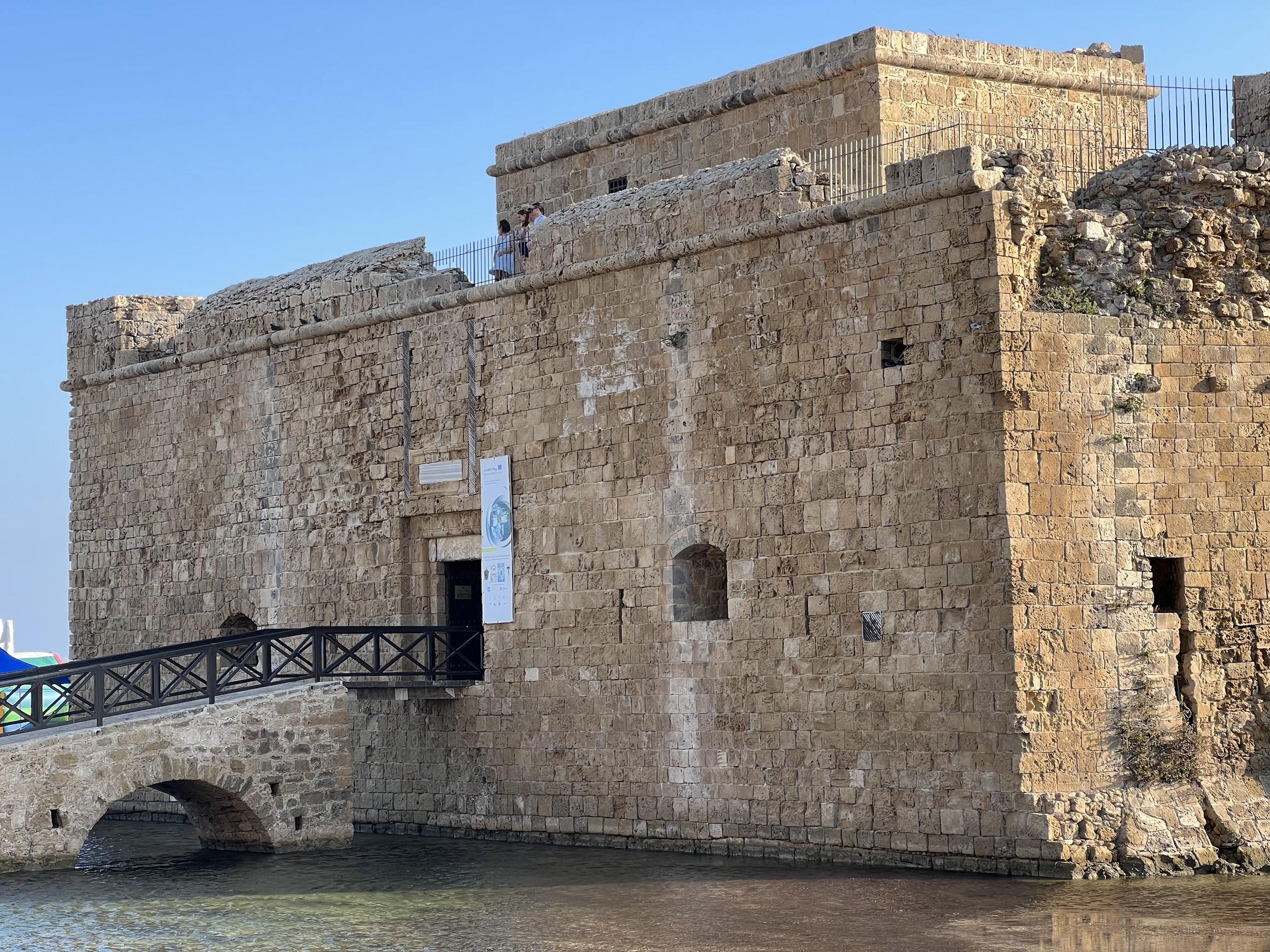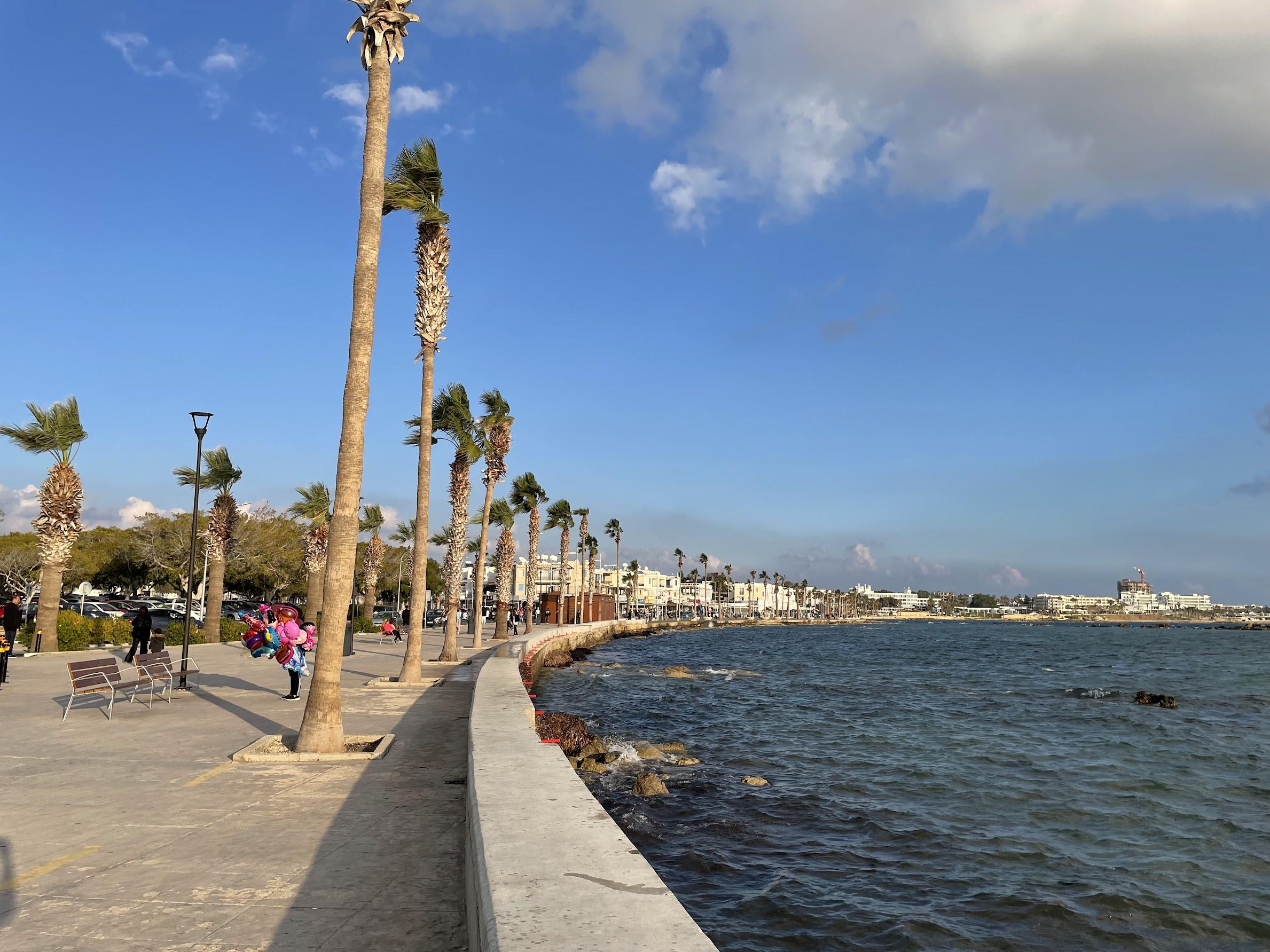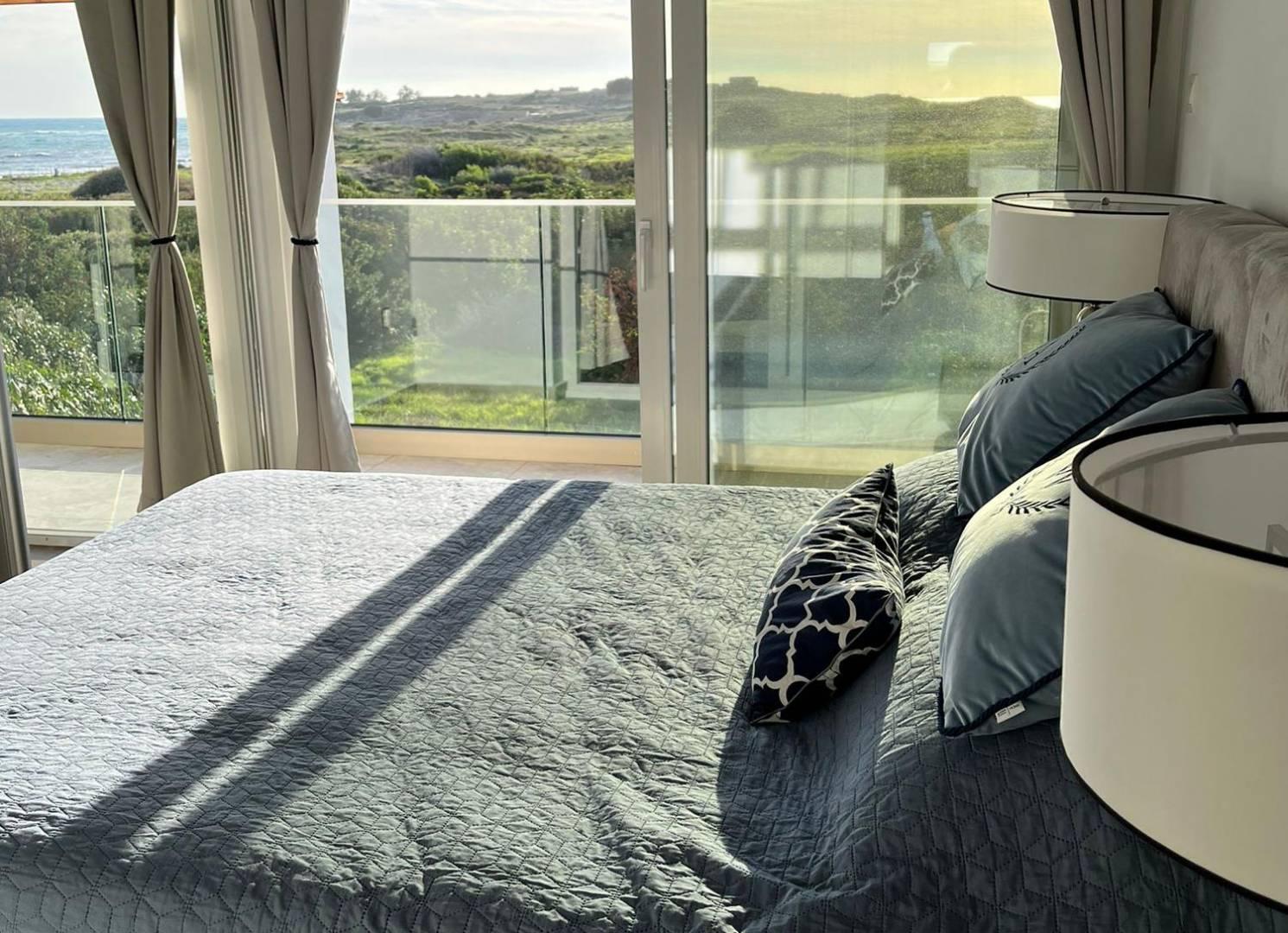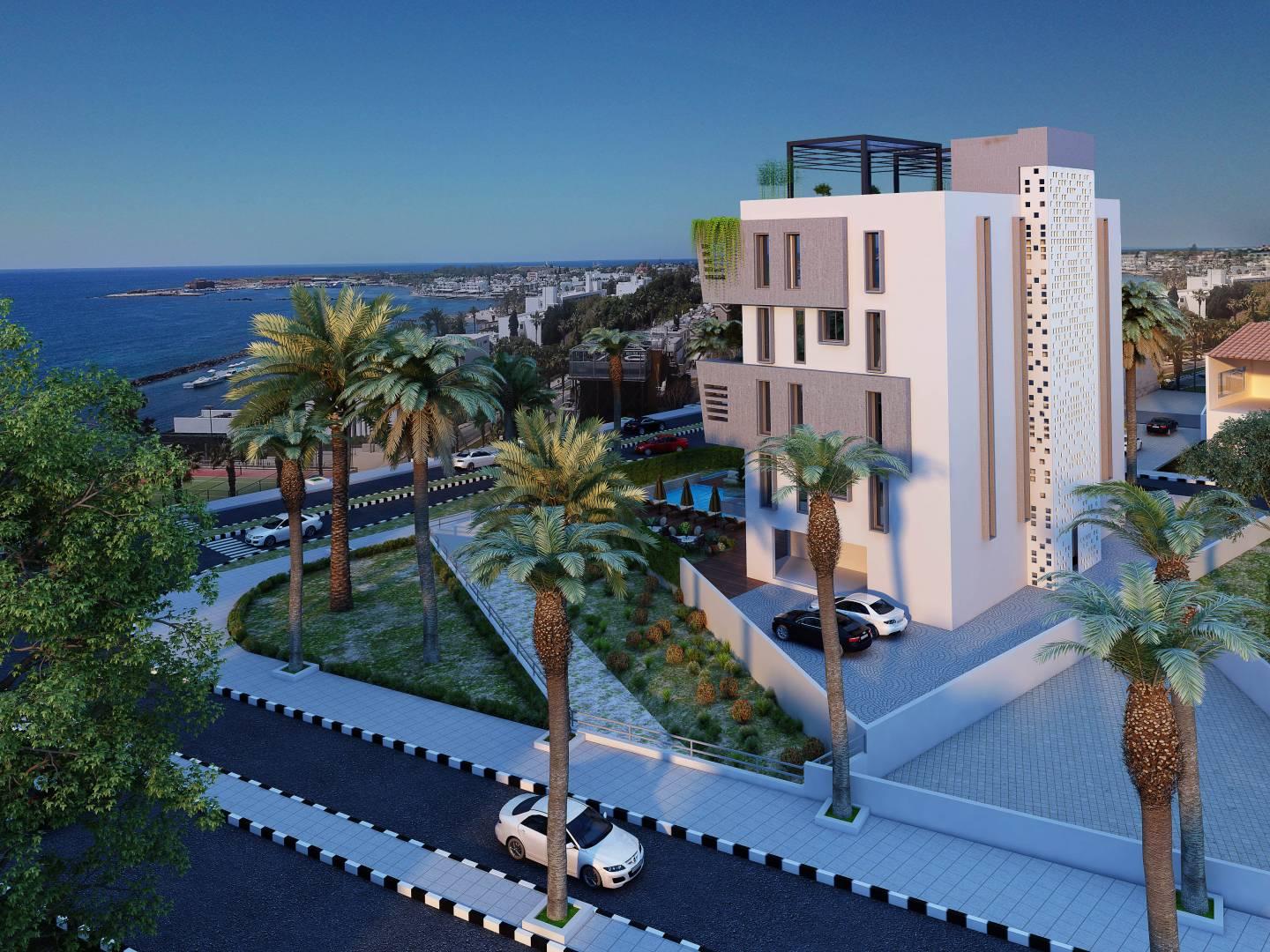Today, the Paphos harbor is essentially the starting point for all tourist routes. It is where the exploration of the city's waterfront begins and where the Paphos Castle is located. Interestingly, the harbor has its own long and fascinating history. Let's take a closer look at it and delve into different eras.
The history of the harbor's establishment
The first settlement in the area of Paphos dates back to the Neolithic period, no later than 3000 BC. It was located south of the present-day city, where the village of Kouklia is situated today. Later, around the 12th century BC (immediately after the Trojan War), the political and economic center was moved to the site of modern-day Paphos. It can be assumed that the first "beginnings" of the harbor existed back then, although there is no archaeological evidence of this.
Historians disagree on when the first structures in the Paphos harbor were built. Some believe that it was founded by Alexander the Great, who conquered Cyprus in 340-320 BC. As an experienced military commander, he understood the need to defend the island from sea raids and to establish a fleet, which prompted the construction of a port.

Other experts lean towards the creation of a fully-fledged harbor during the rule of the Ptolemies in Cyprus when Paphos flourished and essentially became the capital of the entire island. Ships loaded with Cypriot timber and copper would depart from the port to the mainland.
Interesting fact! Copper has been one of the main export resources of Cyprus from ancient times to the present. There is a hypothesis that the island received its name from this metal, which is called "cuprum" in Latin.
Regardless, the Paphos harbor appeared at its present location no later than 300 BC. Since then, it has undergone many changes due to earthquakes, invasions by conquerors, and shifts in power. What we see today is merely echoes of its rich history.
The harbor during the Roman and Byzantine eras
By 48 BC, Cyprus became definitively part of the Roman Empire. It was a prosperous and abundant but not the most peaceful time for the island. Paphos played a significant role as the residence of the proconsul, serving as a political and economic center. The Romans extracted copper in large quantities on Cyprus and also produced and exported ceramics. Additionally, Paphos served as a transit point for trade ships carrying grain and goods from the East.
From a military perspective, during the three centuries of Roman rule, the harbor was poorly developed. It mainly received trading ships, both large and small, without any defensive structures.
The Byzantine era lasted for eight centuries on Cyprus, during which both Paphos and its harbor experienced numerous events. The first five centuries were peaceful, and the island even acquired the technology for silk production. Thus, the harbor became a departure point not only for copper, timber, and natural gifts but also for luxurious fabrics. However, in the 6th century, tranquility ended when Arab raids from the sea began. To protect against them, the port of Paphos acquired a fortress known today as Saranda Kolones.

The fortress was built in the 7th century, with attention not only to its reliability but also to the beauty of the building. Its name was not given without reason: Saranda Kolones translates to "Forty Columns," and the surviving remnants of these columns can be seen in the Paphos Archaeological Park. The fort indeed looked beautiful, but it failed to withstand the Arabs. After barely standing for a century, it was almost completely destroyed. From that point on, the significance of the Paphos harbor as a defensive point diminished, and the city "relocated" slightly inland, giving rise to Pano Paphos.
In 965 AD, the fortress was decided to be restored as the attacks from the sea persisted. This time, Saranda Kolones stood for over two centuries.
Paphos Harbor in the Medieval Era
In 1191, the Frankish rule began in Cyprus. To strengthen their positions, the authorities paid a lot of attention to defense against maritime invasions. As a result, the Saranda Kolones fortress in Paphos Harbor received several new towers and underwent repairs. Unfortunately, it didn't last long. In 1222, a powerful earthquake caused severe damage to the fortress.
Rather than restoring Saranda Kolones, the Paphos Castle was built in its place. However, it was significantly different from what we see today: it consisted of two towers connected by a wall. It would have preserved its appearance until today if it weren't for the Ottoman Empire's conquest of Cyprus. The Venetians, fleeing the island, didn't want to leave such a good fortress to the conquerors and destroyed it.

Paphos Harbor Ceases to Exist
The Ottoman rule was established in Cyprus in 1571 and lasted until 1878. In 1592, the Turks restored one of the towers of Paphos Castle and used it for multiple purposes: the ground floor served as a prison, while religious events took place on the second floor.
However, the port itself practically ceased to operate. The water level rose, and the bottom became covered with a thick layer of mud, making it impossible for larger ships to dock there. Trade through Paphos came to a halt, and it was not feasible to maintain a military fleet. The local inhabitants mainly settled in Pano Paphos, further away from the coast, so there was no promenade along the sea. The Paphos Castle became a warehouse for salt.
The situation changed only in the early 20th century during the British colonization of Cyprus. In 1908, the British deepened the harbor, giving it a new lease of life. While large liners cannot enter the harbor, fishing boats and yachts can comfortably anchor here.

After Cyprus began to develop as a tourist destination (after gaining independence), the Paphos promenade and all its familiar facilities emerged.
Paphos Harbor Today
Today, Paphos Harbor is a marina for small vessels, home to Paphos Castle, and the starting point of the promenade. This small location allows visitors to explore it within a few minutes. The Paphos Castle hosts interesting public events and a mini-museum that can be visited for a small fee. It is particularly enchanting to be here at sunset as the sunsets in Paphos are simply magnificent.

The promenade stretches for almost 7 km (extending to Geroskipou) and is abundant with cafes, restaurants, shops, clubs, and pubs. Several well-equipped beaches are located along the promenade, where even children can swim.
Interesting fact! The latest "updates" to the promenade were carried out in 2010 when it acquired its final appearance.
Lastly, the harbor itself is a small area where you can rent a catamaran or arrange a yacht trip. There is no actual port here, and international flights certainly do not pass through Paphos Harbor. Interestingly, unlike other cities, Paphos is not rushing to establish its own modern marina. This is partly because the local residents and authorities do not want to change the ancient look of the city and construct modern buildings next to the Archaeological Park and the fortress.
Therefore, a decision was made to build the marina of Paphos slightly further away in the Potima Bay (Coral Bay area), between Peyia and Kissonerga. However, the project faced numerous obstacles, including issues with contractors and financing. Currently, it is still in the stage of being an unresolved matter, but if it is successfully implemented, a new chapter in Paphos' history will unfold.

Real estate properties in the area of the current Paphos Harbor are among the most sought after, profitable for investment, and comfortable for living. They are located in the heart of Paphos, providing access to all infrastructure (not only tourist but also business), and thus, they are in high demand. Interestingly, the price per square meter here is lower than that of similar properties in Limassol. So, if you are looking for housing in Cyprus, consider Paphos.
For example, for a very reasonable price, you can purchase a 1-bedroom apartment with a sea view. The apartment comes with all the necessary amenities (including recent renovations, furniture, and appliances), making it ideal for rental or personal living.

Another option is a 3-bedroom apartment in an elite complex right on the coast. The complex is newly built, and acquiring property here qualifies for obtaining Cyprus Permanent Residency through an accelerated program, not only for the investor but also for their family members.

You can also consider the Soho Resort complex, which offers a wide selection of apartments, its own infrastructure, and convenient access to all locations in Paphos, including the harbor. For larger families, a 4-bedroom apartment on the 12th floor with incredible views and all amenities would be suitable.
Available for sale options in Soho Resort

Privacy enthusiasts should pay attention to a separate 3-bedroom villa. It features exquisite renovations, a private pool, and excellent views that can be enjoyed from the second floor.

Detailed information about all projects in Paphos can be obtained from the specialists of the #1 real estate agency in Cyprus, DOM, by phone at +357 26 030 205, or in person at 1st Apriliou Street 8, Aristo Center 8011, Paphos, Cyprus.
Read also:

